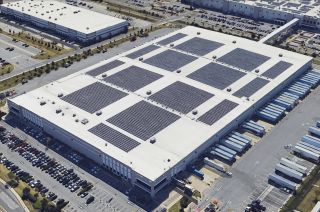
www.buildingsandcities.org/insights/commentaries/social-value-architect.html
Social Value: An Architect's Perspective

How can research assist architects & others to substantiate the intended social benefits in an architectural project?
Edward Ng (Chinese University of Hong Kong) provides an architect's perspective on the Buildings & Cities special issue 'Social Value of the Built Environment'.
Social value is a topical issue for architects in the UK and other developed countries. The UK's Public Services (Social Value) Act 2012 has generated recent attention on this topic. However, the lineage of the concept goes back to 1919 when MP Robert Munro spoke in the UK's House of Commons of the 'social value' that good housing creates for workers and which 'release the springs of industry' (White, 2022). This reflects exactly what I have been trying to do in the last 20 years as a practicing architect and professor of architecture: building houses to create capabilities beyond merely living (1U1V, 2023). My limited experience working towards creating social value can be summarized as: (a) a co-creation process with stakeholders and (b) providing a long-term perspective. The rest is technical.
This special issue edited by Flora Samuel and Kelly Watson examines the concept of social value in a more academic manner. From the need to define the concept more precisely to the advancement of the evaluation methods, the different perspectives in the special issue have elaborated the concept for architects. This diversity of views is a good indication that this subject is an emerging one: more research and discussion are needed. More importantly, it confirms that a multi-disciplinary approach is necessary. That is to say, architects need to learn from and involve other disciplines when developing projects.
A difficult issue that arises in an architectural project is: how can the various intended social benefits be substantiated and quantified? Building a house that the villagers can live in comfortably is easy to prove. Assessing the socio-economic and cultural benefits is significantly more difficult. A user survey of the villagers will yield polite and short-term responses, but these may not articulate the social value. Therefore, developing robust methodologies and protocols will be extremely important. A range of methodologies will be required - as stipulated by some of the authors in the special issue - to ensure that assessment is context based. There is no one kind of need and one type of user. In my own architectural projects, we don't abandon the villagers after co-creating their homes, our involvement and social intervention continues afterwards. Therefore, new methodologies must take the long-term perspective into account.
The two articles in the special issue, by Barrie et al. (2023) and Croffi et al. (2023) on high-density mixed-use projects are of particular interest. This kind of project is familiar to people living in Hong Kong as most developments are high-density and mixed-use. As many cities continue to expand and densify, the question of how to design high-density mixed-use projects for a better social future is important for many architects. Mixed-use building has the benefit of bringing essential facilities close to inhabitants. For an ageing society, the mobility of some older people is limited. Hence,high-density mixed-use has the potential to provide social value to its ageing users.
Barrie et al. (2023) consider a single block mid-rise building in Adelaide, AU. The robust methodology employed concepts of active environment, wellbeing and place-making which allowed the assessment to be more objective. Apart from how the building itself may create added value, an important lesson is to extend the assessment boundary to the site context. This acknowledges the difficulty (if not the impossibility) for a simple building to address many values treasured by the users, e.g. generational integration or civic support provisions. In addition, it is useful to ascertain how the building creates social value for users who don't live in the building. It is vital for buildings to work collectively to ensure mutual benefits are created: planners, developers, architects and other professionals have a social responsibility to create the appropriate spaces and functions.
Croffi et al. (2023) focus on environmental performance. Its abstract is controversial as this topic has not been the case in many high-density cities. The term wellbeing has been used to guide the study. A good definition of wellbeing is provided by WELL v2 (WELL, 2020) by the International WELL Building Institute (IWBI). Only a few of the principles of the WELL Standard were used by the authors, and the study concentrated on the indoor environment. Some of the quantifiable parameters, (e.g. thermal comfort) were identified. The article reports some details of the user surveys. However, if the users' perceptions and responses are correlated with the actual physical conditions of environment, then on-site quantitative environmental measurements are required. It is a pity that the article does not provide further technical details and measurements. As such, establishing thresholds or achievements is impossible; and assessing benefits is not attainable. The next goal should be substantiating the framework with critical data analytics.
As a practicing architect, I have benefitted from studies that are project based. The RIBA Social Value Toolkit for Architecture (2020) has provided us a few starters. However, nothing is easier to learn than case studies. As Dean Hawkes paraphrased Leslie Martin:
Theory is the body of principles which explains and interrelates all the facts of a discipline. Critical practice is the tool by which theory is advanced. Without theory and critical practice, teaching can have no direction and thought no cutting edge.
Researchers provide a useful role by providing independent, robust analyses which practitioners and policymakers can learn from. I would welcome the publication of more social value case studies in subsequent issues.
Like Samuel and Watson (2023), I am very interested to ponder what could be next, and more importantly, for whom and how. Methodologies and technicalities are obviously further areas of investigation. Samuel and Watson have identified that climate change adaptation should be considered as part of social value. Ethics and motivation could also be investigated. Addressing the question of why we should be bothered may lead to clarity on how we may wish to progress. Motivation is always the most powerful force. For me, the smiles, friendship and feedback of the villagers whom we have helped 10 years ago has provided the spiritual support for our long-term effort.
References
1U1V (2023). One University One Village www.1u1v.org
Barrie, H., McDougall, K., Miller, K. & Faulkner, D. (2023). The social value of public spaces in mixed-use high-rise buildings. Buildings and Cities, 4(1), 669-689. https://doi.org/10.5334/bc.339
Croffi, J., Kroll, D., Soebarto, V., Barrie, H. & McDougall, K. (2023). Wellbeing fostered by design: a framework for evaluating indoor environment performance. Buildings and Cities, 4(1), 507-523. https://doi.org/10.5334/bc.336
RIBA (2020). Social Value Toolkit for Architecture. London: RIBA Publication.
Samuel, F. & Watson, K. (2023). Social value of the built environment. Buildings and Cities, 4(1), pp. 938-947. https://doi.org/10.5334/bc.399
WELL (2020). https://v2.wellcertified.com/en/wellv2/overview/
White, C. (2022). Social value 2032: shaping the future of social value. Social Enterprise UK. https://www.socialenterprise.org.uk/app/uploads/2022/05/Social-Value-2032-Creating-a-Social-Value-Economy-compressed.pdf
Latest Peer-Reviewed Journal Content
A living lab approach to co-designing climate adaptation strategies
M K Barati & S Bankaru-Swamy
Mediation roles and ecologies within resilience-focused urban living labs
N Antaki, D Petrescu, M Schalk, E Brandao, D Calciu & V Marin
Negotiating expertise in Nepal’s post-earthquake disaster reconstruction
K Rankin, M Suji, B Pandey, J Baniya, D V Hirslund, B Limbu, N Rawal & S Shneiderman
Designing for pro-environmental behaviour change: the aspiration–reality gap
J Simpson & J Uttley
Lifetimes of demolished buildings in US and European cities
J Berglund-Brown, I Dobie, J Hewitt, C De Wolf & J Ochsendorf
Expanding the framework of urban living labs using grassroots methods
T Ahmed, I Delsante & L Migliavacca
Youth engagement in urban living labs: tools, methods and pedagogies
N Charalambous, C Panayi, C Mady, T Augustinčić & D Berc
Co-creating urban transformation: a stakeholder analysis for Germany’s heat transition
P Heger, C Bieber, M Hendawy & A Shooshtari
Placemaking living lab: creating resilient social and spatial infrastructures
M Dodd, N Madabhushi & R Lees
Church pipe organs: historical tuning records as indoor environmental evidence
B Bingley, A Knight & Y Xing
A framework for 1.5°C-aligned GHG budgets in architecture
G Betti, I Spaar, D Bachmann, A Jerosch-Herold, E Kühner, R Yang, K Avhad & S Sinning
Net zero retrofit of the building stock [editorial]
D Godoy-Shimizu & P Steadman
Co-learning in living labs: nurturing civic agency and resilience
A Belfield
The importance of multi-roles and code-switching in living labs
H Noller & A Tarik
Researchers’ shifting roles in living labs for knowledge co-production
C-C Dobre & G Faldi
Increasing civic resilience in urban living labs: city authorities’ roles
E Alatalo, M Laine & M Kyrönviita
Co-curation as civic practice in community engagement
Z Li, M Sunikka-Blank, R Purohit & F Samuel
Preserving buildings: emission reductions from circular economy strategies in Austria
N Alaux, V Kulmer, J Vogel & A Passer
Urban living labs: relationality between institutions and local circularity
P Palo, M Adelfio, J Lundin & E Brandão
Living labs: epistemic modelling, temporariness and land value
J Clossick, T Khonsari & U Steven
Co-creating interventions to prevent mosquito-borne disease transmission in hospitals
O Sloan Wood, E Lupenza, D M Agnello, J B Knudsen, M Msellem, K L Schiøler & F Saleh
Circularity at the neighbourhood scale: co-creative living lab lessons
J Honsa, A Versele, T Van de Kerckhove & C Piccardo
Positive energy districts and energy communities: how living labs create value
E Malakhatka, O Shafqat, A Sandoff & L Thuvander
Built environment governance and professionalism: the end of laissez-faire (again)
S Foxell
Co-creating justice in housing energy transitions through energy living labs
D Ricci, C Leiwakabessy, S van Wieringen, P de Koning & T Konstantinou
HVAC characterisation of existing Canadian buildings for decarbonisation retrofit identification
J Adebisi & J J McArthur
Simulation and the building performance gap [editorial]
M Donn
Developing criteria for effective building-sector commitments in nationally determined contributions
P Graham, K McFarlane & M Taheri
Join Our Community

The most important part of any journal is our people – readers, authors, reviewers, editorial board members and editors. You are cordially invited to join our community by joining our mailing list. We send out occasional emails about the journal – calls for papers, special issues, events and more.
We will not share your email with third parties. Read more



Latest Commentaries
COP30 Report
Matti Kuittinen (Aalto University) reflects on his experience of attending the 2025 UN Conference of the Parties in Belém, Brazil. The roadmaps and commitments failed to deliver the objectives of the 2025 Paris Agreement. However, 2 countries - Japan and Senegal - announced they are creating roadmaps to decarbonise their buildings. An international group of government ministers put housing on the agenda - specifying the need for reduced carbon and energy use along with affordability, quality and climate resilience.
Building-Related Research: New Context, New Challenges
Raymond J. Cole (University of British Columbia) reflects on the key challenges raised in the 34 commissioned essays for Buildings & Cities 5th anniversary. Not only are key research issues identified, but the consequences of changing contexts for conducting research and tailoring its influence on society are highlighted as key areas of action.